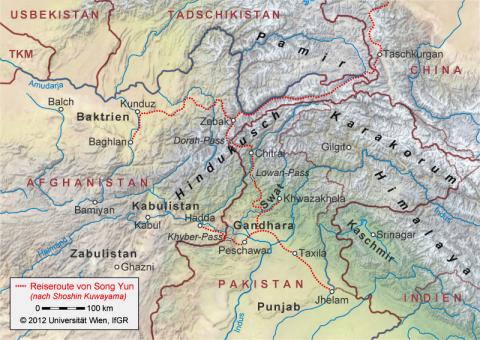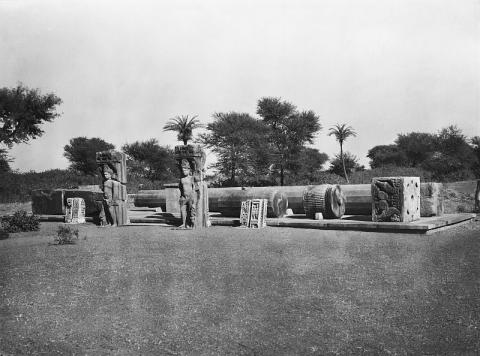
Toramana and Mihirakula were the best known Hun kings in India, and a great deal of epigraphic evidence for both can be found there. Their coinage identifies them without a doubt as belonging to the Alkhan; yet their coinage is distanced stylistically from that of the Alkhan at the time of Khingila.
Inscriptions show that the Huns under Toramana pushed from Punjab into Central India; the southernmost point with an inscription from Toramana (Fig. B) was Eran in Malwa (540 km south of New Delhi), a region that brought the Alkhan into contention with the Gupta emperors.
In an inscription set at Gwalior (on the edge of the Ganges plain, 280 km south of New Delhi) Mihirakula is identified as the son of Toramana. The coinage corroborates this, as the numerous overstrikes prove that Mihirakula at least ruled after Toramana (Nr. 5).
In 520 CE on his journey to the Buddhist sites of India (Fig. C), the Chinese pilgrim Song Yun encountered a Hun king in Punjab who had been at war with the king of Kashmir for three years and who might be identifiable as Mihirakula. Before 532 CE Mihirakula suffered a devastating defeat against Yasodharman, king of Malwa, signaling the demise of the Alkhan in India (Fig. D).
Around the middle of the 6th century CE, the Alkhan successively pulled out of Punjab and Gandhara and back to Kabulistan, where they encountered the Nezak kings (showcase 11). A political or dynastic connection between the Alkhan and the Nezak is made evident in a series of drachms produced in Gandhara which show the Alkhan king with the bull-head crown of the Nezak (Nos. 9–11).
Nearly parallel to the Alkhan in Gandhara and India, the Hephthalites in Bactria met their demise when they were defeated by the allied Sasanian and Western Turks in around 560 CE (showcase 10).
A. Gold dinar of Toramana (?) with the Brahmi inscription "Prakashaditya" (“sun of the light space”), struck in a mint of the Gupta Empire in Central India. The image on the coin shows the mounted king of the Huns fighting against a lion.
B. Inscription from the year one of the reign of Toramana on a statue of a boar in Eran (Malwa, 540 km south of New Delhi, Indian state Madhya Pradesh), After 484/85 CE. (© Gudrun Melzer)
"In year one of the reign of the King of Kings Sri-Toramana, who rules the world with splendor and radiance."
C. Route of the Chinese monk Song Yun to the Buddhist sites of India, 518–522 CE. (© Shoshin Kawayama) While the Chinese monk Song Yun records the king of Uddiyana (Swat Valley) as a devout Buddhist, he describes the Hun king, whom he met during his travels in the year 520 CE in eastern Punjab, and who might possibly be identified as Mihirakula, as brutal and not believing in Buddhist teachings. Song Yun traveled through Tashkurgan (Xinjiang) and the Wakhan Corridor in the Pamir Mountains to Bactria (Tokharistan), where in the fall/winter of 519 CE he arrived at the court of the Hephthalite king in Baghlan, on the middle course of the Surkhab River. From there his path continued back to Zebak, across Chitral and the passes between Hindu Kush and Karakorum mountains to Uddiyana, and afterward to Gandhara and into the eastern Punjab (Jhelum).
D. Mandasor column inscription from Yasodharman, King of Malwa (Central India). Before 532 CE. (© Gudrun Melzer)
Yasodharman praises himself for having defeated king Mihirakula.


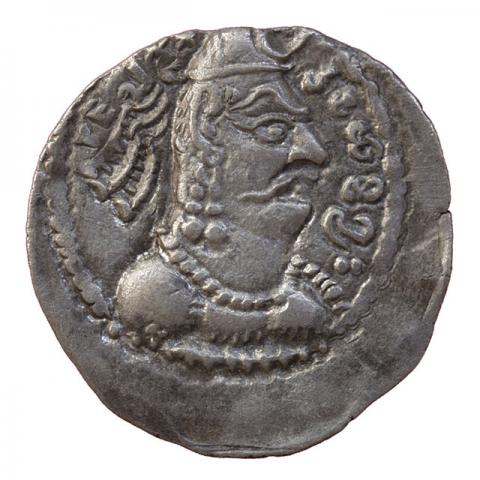
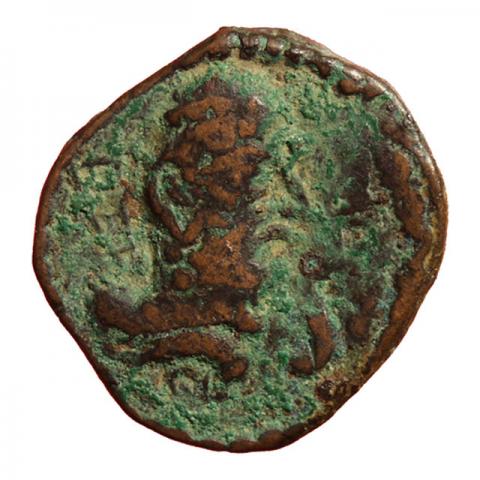
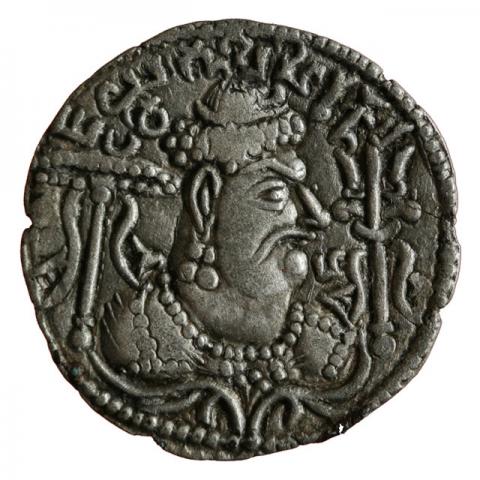
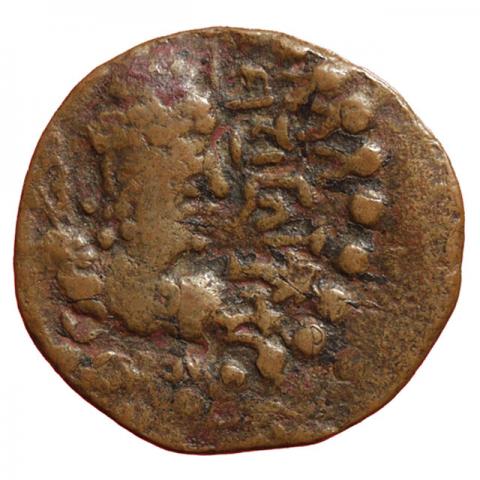
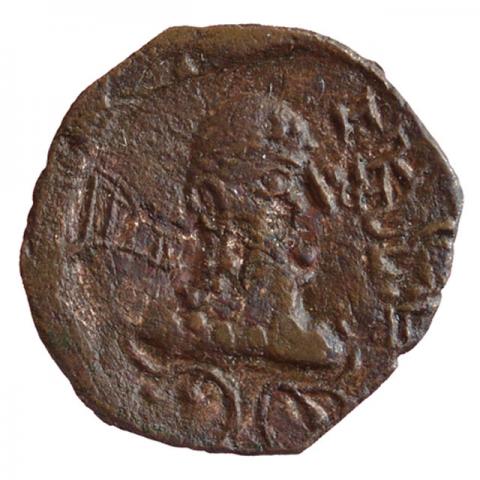
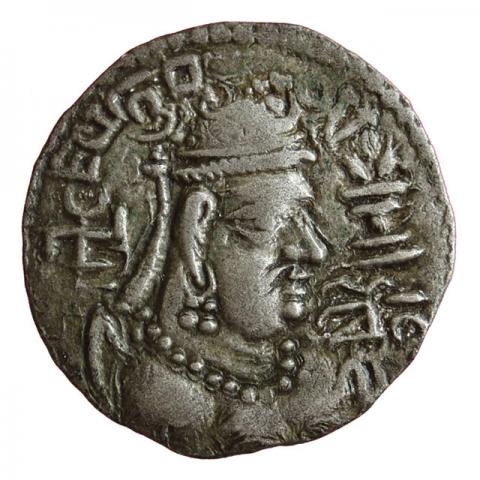
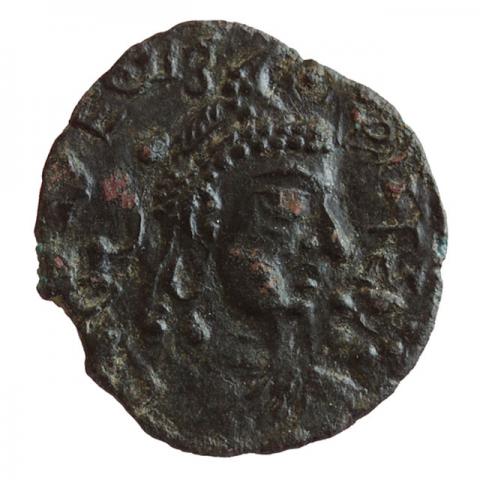
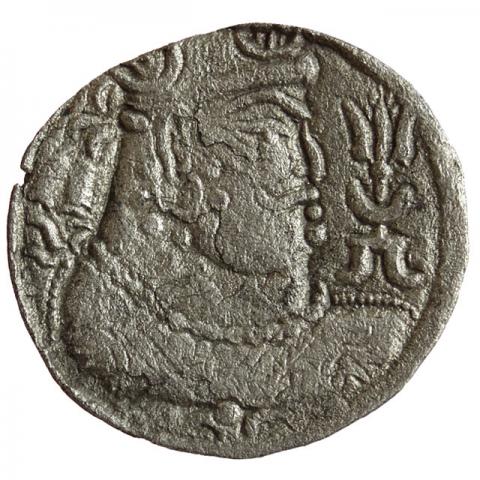
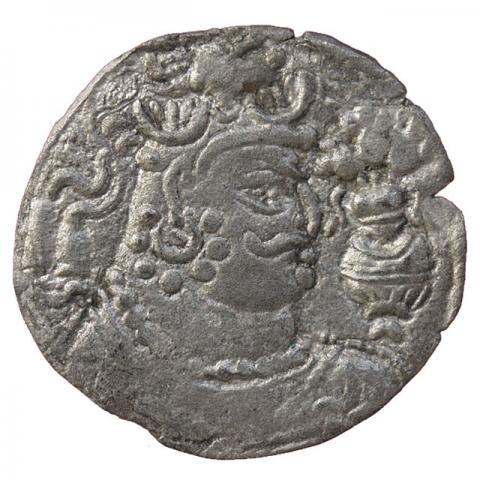

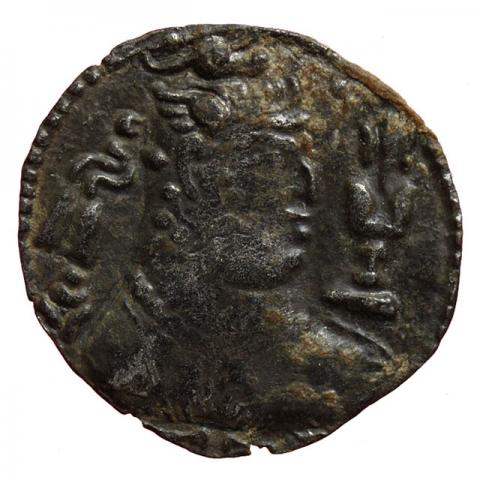
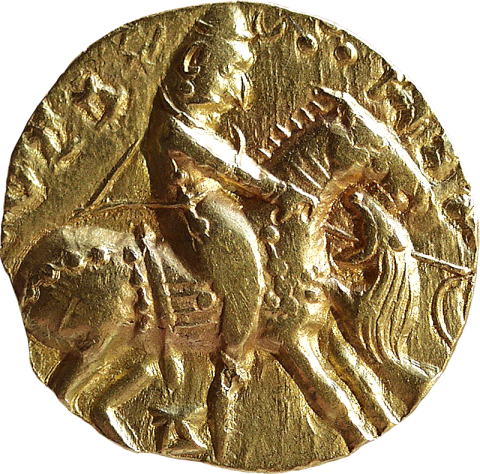
_0.jpg%3Fitok=jr26jBzW)
_0.jpg%3Fitok=fQYP_Y8F)
